It might be a remake of a remake, but Tactics Ogre Reborn is one of the greatest games of its genre. It effectively established the genre, many years ago, and has barely lost anything in the years since. I have to hope that Square Enix has prepared this release to give the long-dormant property a kick, because by rights this should just be the start of a major property to come.
Tactics Ogre starts with a bang. There’s a group of kids that live in a nation that has been crushed in conflict. They’re out for revenge and attempt to throw their lives away in an act of desperate revenge against a unit of mercenaries that, they believe, are responsible for some truly heinous acts. Luckily for them, that was just a case of mistaken identity and they’ve actually run into the “good guys,” who help them liberate their imprisoned local lord instead. Pressed into service from there, this group of – again, kids – set out on a truly epic story of warfare and violence.
In the years since Tactics Ogre first debuted – remember, it was originally a SNES game – other games have come along to put an even more grandiose spin on epic, continent-shattering war. The Valkyria Chronicles series, for example, or the four games in Trails of Cold Steel. Like Tactics Ogre, each of those projects borrows heavily from the aesthetics and structures of historical epics like War and Peace of Taiko, and uses that structure to ask some pretty weighty questions about conflict of players.
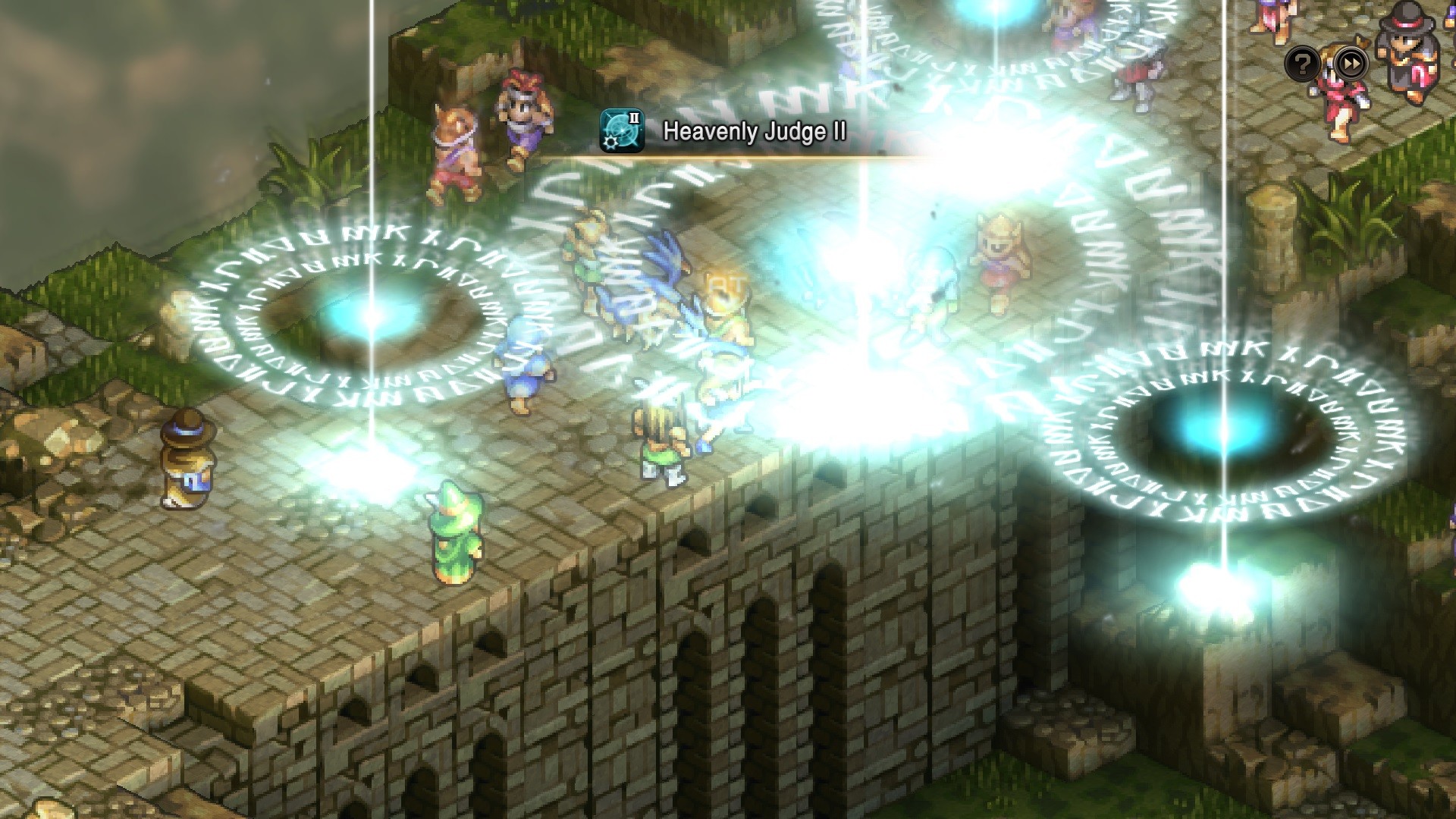
While Tactics Ogre is older than those other titles, it works a level of nuance and depth into the writing that was rare for games back then. The sum of this is that playing Tactics Ogre today doesn’t feel nostalgic. With many SNES games, if you play them today, you need to adjust your expectations against the kinds of stories that were possible at the time, given the limitations. That is to say, you should expect a certain brevity and efficiency to both characterisation and storytelling, Here, however, you could play this back-to-back with something like Triangle Strategy and appreciate the depth of both equally.
Specifically, Tactics Ogre offers a deeply moral, questioning narrative. It asks players to think about what is justified in the name of war, how individuals might be motivated into conflict, and the macro questions about warfare itself – it addresses concepts like imperialism, racism and class. Here’s just one quote from one villain (Nybeth) at one point in the game: “I find men who claim to speak for God insufferable. The tenacity of your belief is admirable, but deities and demons? Rubbish. While one man’s spirit may be lofty, and another’s heart devilish, bowing to them does not make you pious. It makes you weak! To honour gods and despise demons is to dilute the weight of your words and the import of your actions.” Yes, Tactics Ogre is very willing to wax philosophical, and just about any moment where the characters open their proverbial mouths is the promise that you’re going to be left with something weighty to muse on.
Grab a glass of red wine when playing this one, in other words. It wants to convince you to write essays about it.
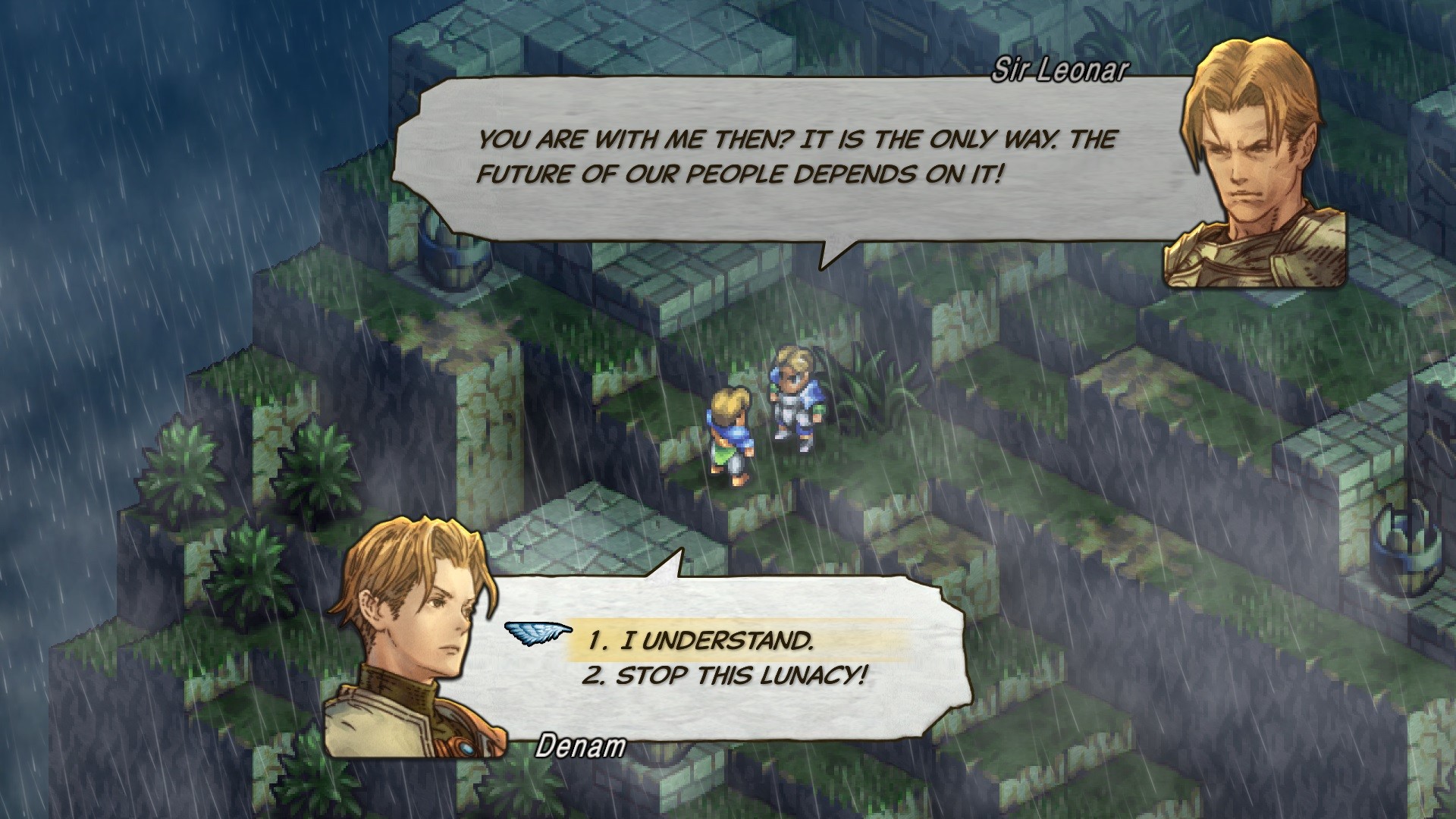
It’s more than a little tragic that world events continue to transpire to make such subject material evergreen in its relevance. Tactics Ogre’s director, Matsuno Yasumi, spent much of his career grappling with many of these themes (there are strong thematic crossovers with his other iconic work, Final Fantasy XII, too), and it is important that the arts do so. People need to be challenged on their assumptions and their read on real-world events, and the parallels to Tactics Ogre, and the way it addresses assumptions and perspectives on conflict is poignant.
The gameplay itself remains foundationally untouched from the PSP remake, and that’s a good thing, since Tactics Ogre already offered a deep and rich combat system. However, Square Enix has done some fiddling around the edges to streamline things, and they’re almost all positive changes. Some of these changes are very minor indeed; for example, the game now displays a trajectory marker for ranged attacks. Where, previously, you could make a costly mistake by misjudging height and terrain and end up missing an attack (or, worse, accidentally hitting an ally that stands between you and your opponent), now you know immediately if the enemy can be safely targeted. It’s also possible to train up units at will via a training option between battles, but level caps also prevent you from being too overpowered and therefore ruining the taut balance of critical battles.
You can now scout battles before committing troops, which allows you to approach party formation in a more strategic manner. There has also been some revamping done to special attacks, skills, and the equipment system. I’m sure there will be some diehard fans of the PSP original that will grumble at these (at least at first), but the grand sum of it is that Tactics Ogre Reborn is a streamlined and efficient experience, and therefore accessible to modern players. The development team have achieved that without sacrificing any of the statistic manipulation, class management and tactical depth, so it’s a win-win situation as far as I’m concerned.
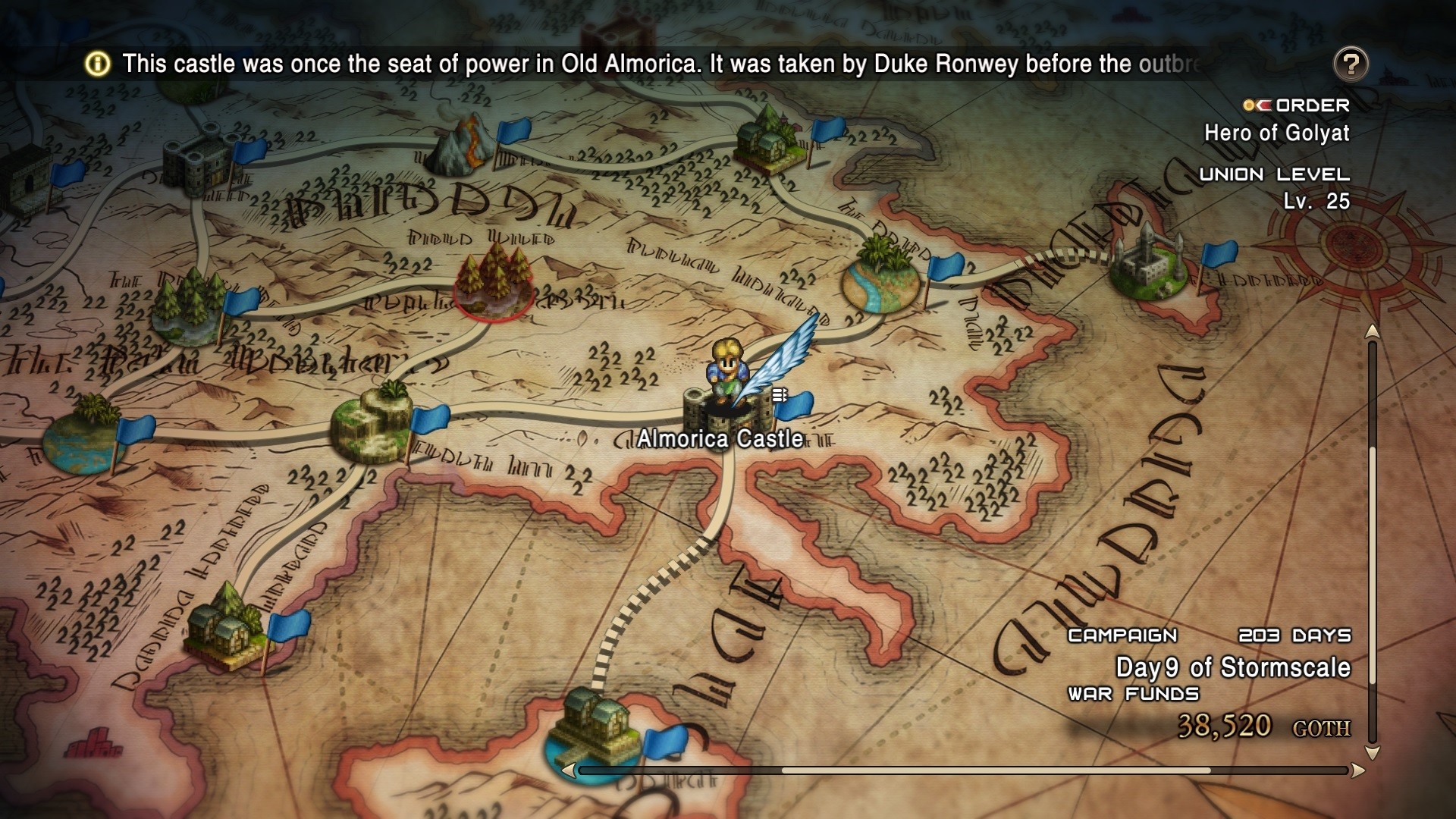
As is now standard for the genre, you’ll command a small unit of individual soldiers in each battle, moving them around a grid in a turn-based manner, and leveraging their unique skills to eliminate enemies along the way. Tactics Ogre features a comprehensive job system, with each job having a distinct utility on the battlefield. You can see that more modern tactics games have built on what Tactics Ogre did. Triangle Strategy, for example, structured better synergies between units so that there was a greater focus on carefully moving the band around, whereas Tactics Ogre is more a case of ensuring that each individual in your squad is holding their own on the battlefield. However, again, it’s quite surprising just how modern Tactics Ogre continues to feel to play.
The only area where I have some question marks is in terms of the presentation. This is the first time we’ve had a Tactics Ogre on a big screen in quite some time, and while Square Enix has done its best to preserve the gorgeous art that we saw in the PSP title, when blown up this aesthetic approach does fall just a little flat. The character portraits are utterly gorgeous, as is the interface and splash art. It’s just the battlefields and sprites that will remind you that this was indeed originally intended for a tiny screen. The voice acting’s pretty poor, too. I can’t actually remember if there was voice acting in previous versions of Tactics Ogre, but I believe I would have remembered them if they were this bad, so I suspect that’s a new addition (and therefore a misfire).
It has been a big year for Square Enix, both in terms of bringing back old titles and producing some new ideas. I feel like I’ve written or said this a dozen times already, but I am concerned that Tactics Ogre Reborn will get overlooked because it comes after a lot of other JRPGs and strategy releases, and people only have so much time available to them. It’s going to be easy to look at the relatively modest sprites and “retro” presentation and instead pick up something like The DioField Chronicle (itself an excellent game, of course).
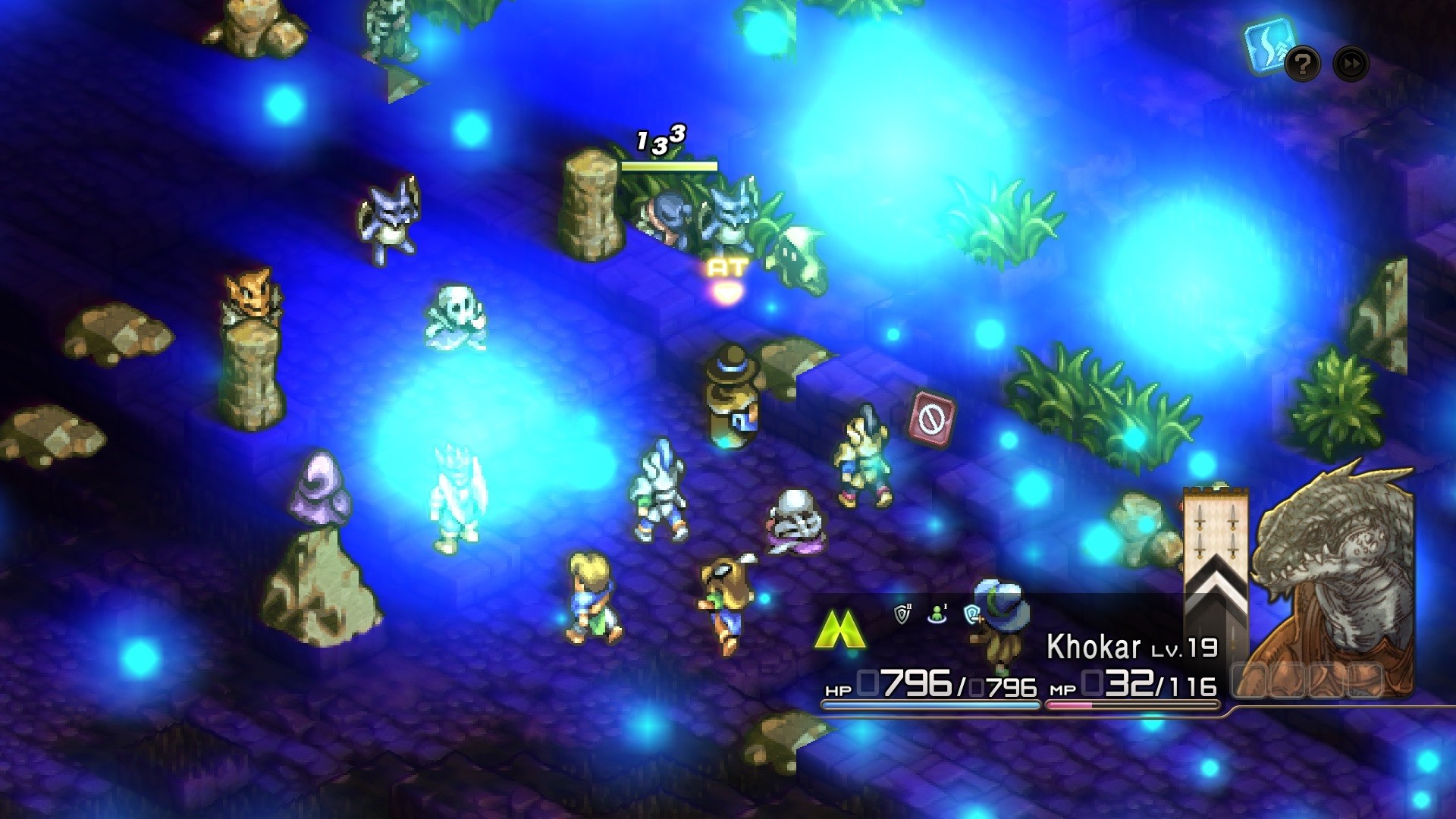
But Tactics Ogre Reborn is the essence of one of video game’s true masterpieces. On this, the second remake, it has proven that it is functionally timeless, both in terms of storytelling and the quality of play. There weren’t many tactics JRPGs around before Tactics Ogre, and those that were largely looked to Fire Emblem for inspiration. Now, though, the isometric combat system that so many tactics JRPGs use these days was inspired directly by two classics – this one, and Final Fantasy Tactics. We have a lot to thank Tactics Ogre for, and Reborn demonstrates just how playable it still is.

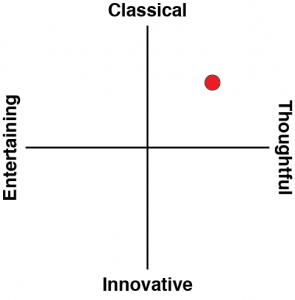
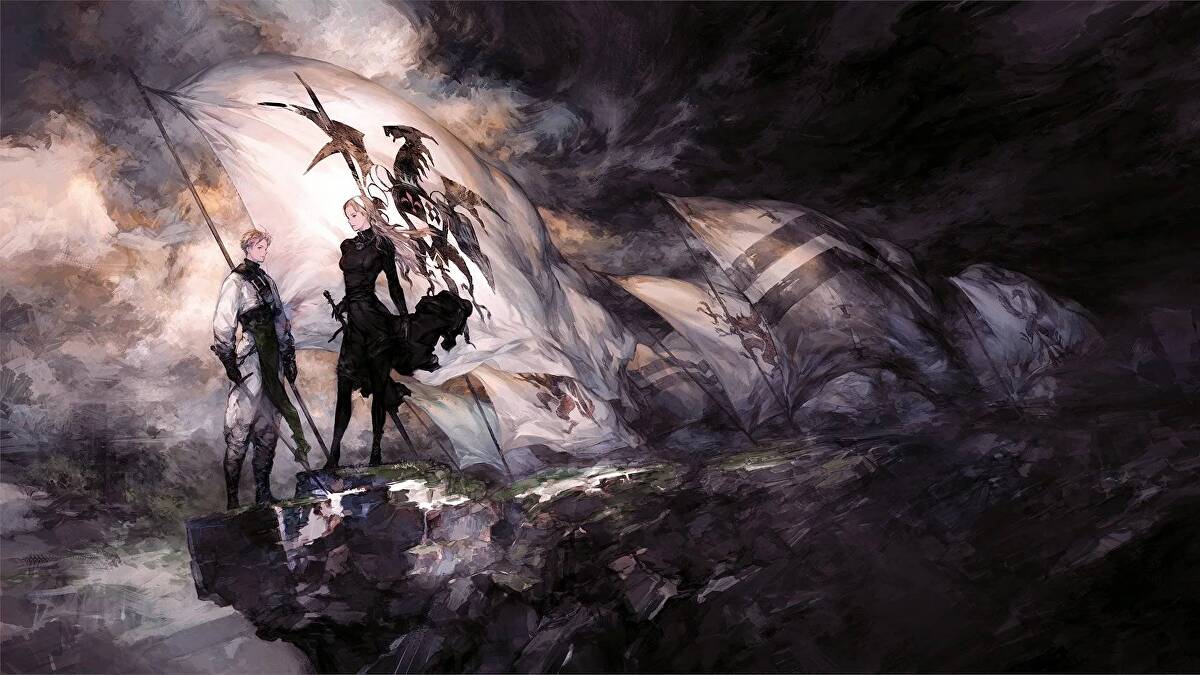

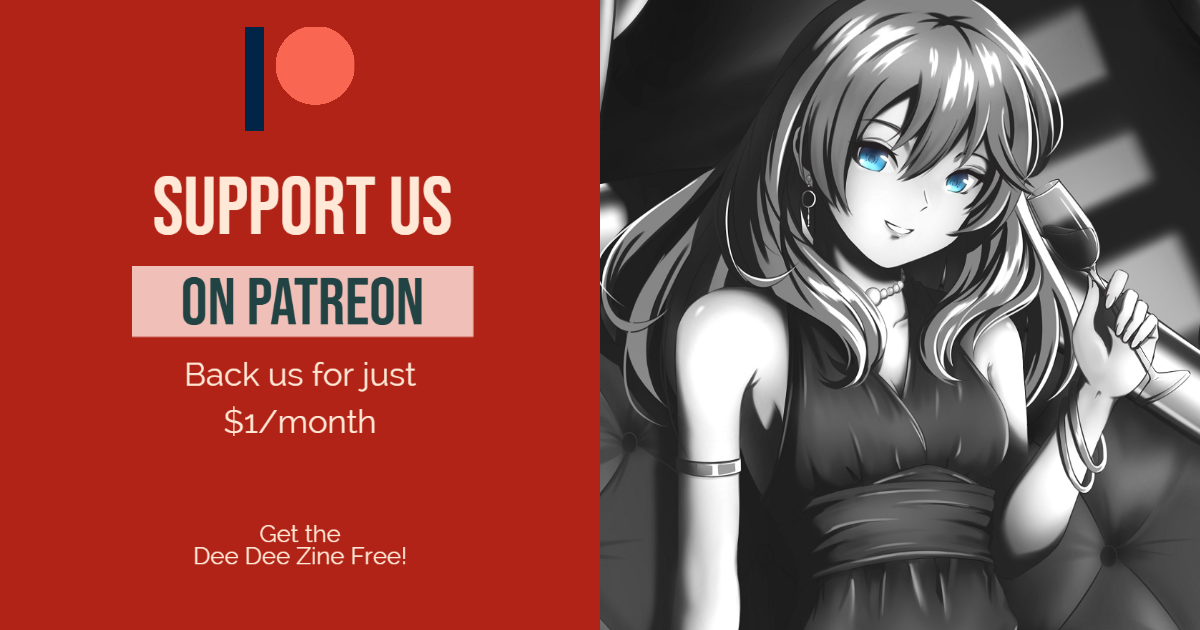



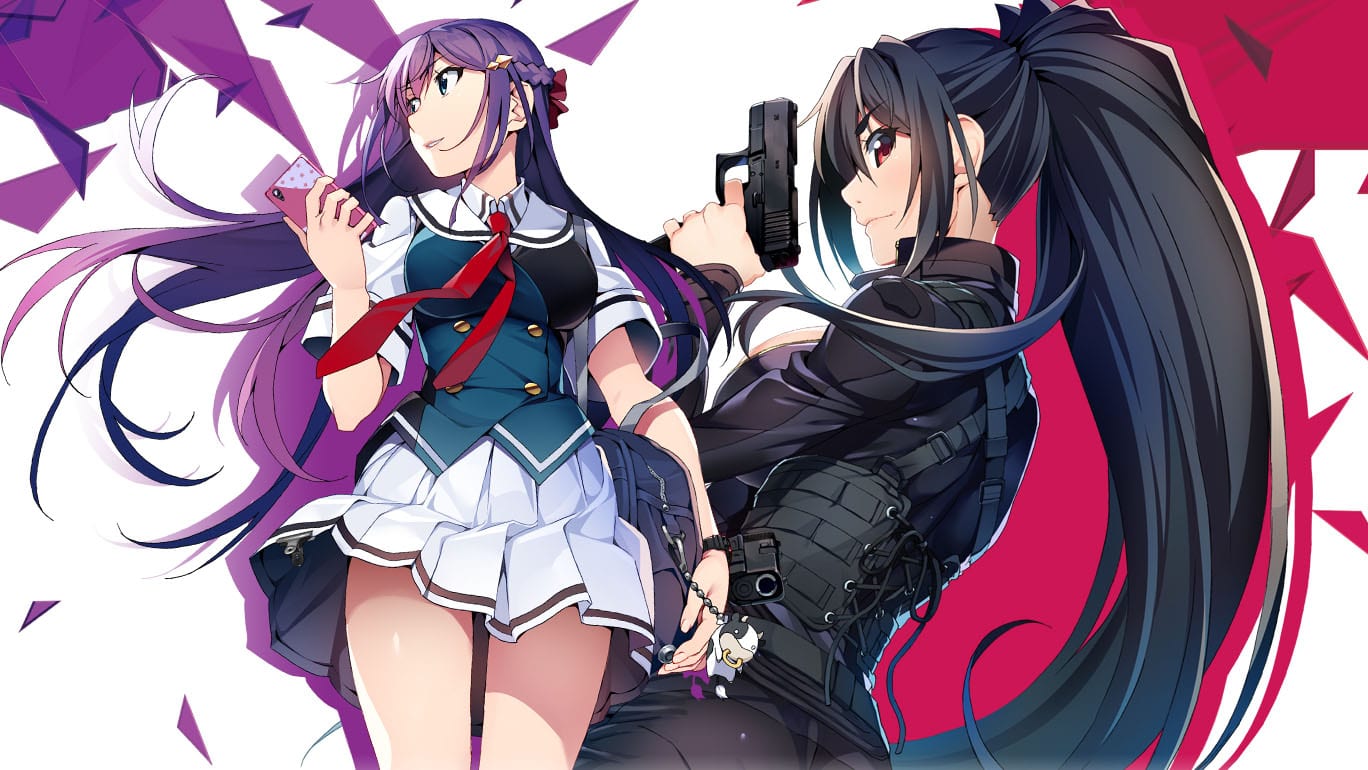
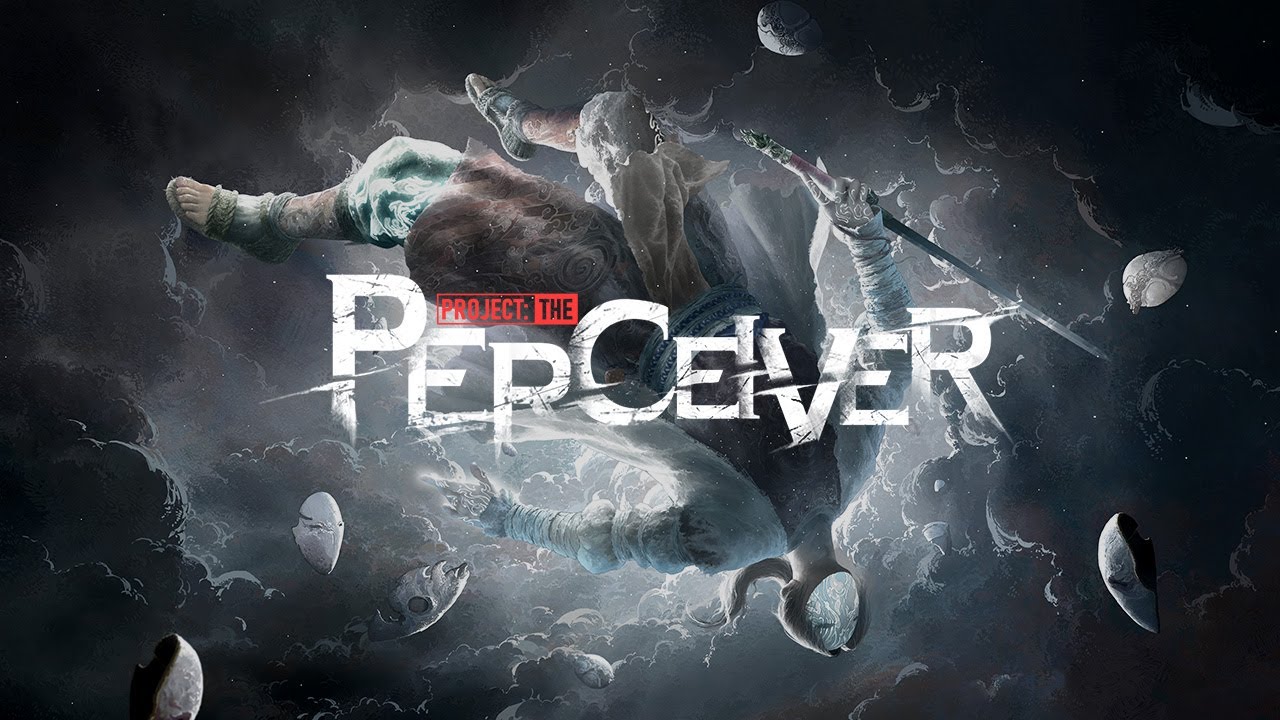


I have held off on ALL the otherJRPG releases for this one. I loved Final Fantasy Tactics and Triangle Strategy, so I am looking forward to this one.
Oh yes, if you’ve never played Tactics Ogre before, especially, you are in for *such* a treat!
With regard to your comment about how this game might get overlooked, do you have any insight as to why Square Enix is releasing (by my count) at least 22 console and/or PC games this year? Why so many? Surely it’s just simple economics that if one compnay sends a deluge of mostly-JRPG content out on the market in one calendar year, sales for each of those games individually will be lower than they would otherwise. Games are expensive to make (both in terms of budget and work-hours), and expensive for us gamers to buy (both in terms of price and precious gaming-time). Do they prefer modest sales figures on each of these 22 games, rather than possibly much better sales on 10-12 games?
I’ve been enjoying (almost) all the Square Enix games I’ve purchased this year, some very much indeed — even some that received lukewarm reviews. But I just can’t figure out why they are flooding the market.
There are three reasons that I can think of to explain Square Enix this year:
1) They’re looking for new properties to develop, and so are exploring the back catalogue and trying a lot of new things to see what sticks and has potential.
2) In the absence of a really big game, they’re trying to meet revenue targets through quantity. If you’re not going to sell one Final Fantasy and net 10 million sales from it, you’re going to need to sell 20 games and hope that you can get around 500,000 sales from each on average. Or at least close enough that the accountants don’t panic. I would expect the quantity to be less when Square Enix has the massive new Final Fantasy XVI on the market next year.
3) At least some of these titles were COVID-19 affected and were meant to release last year. It is, of course, expensive to sit on unreleased inventory and properties, so they’ve just released them along with the rest of the 2022 schedule.
It’s probably a combination of all three things. I do hope it doesn’t kill my favourites from getting ongoing development, lol.
Good points, Matt — I appreciate your insight!
With regard to your #2, it makes sense that they’re trying to hit revenue targets — but surely with the costs involved in developing and releasing all of these 22 games, their PROFIT for many of them must be small? I’m worried that a couple of good games (like DioField Chronicle) might even be losing money, once costs are factored. I’m not an economist, but as I understand it REVENUES are important (and look good to investors/shareholders), but PROFITS (revenues minus costs) are more important to the bottom line, to the health of a company, and to its prospects for future development.
Listed companies get weird with accounting. Profit is not necessarily a concern to shareholders or a listed company in the short term. Obviously, long term the company needs to be profitable, but dips in profitability won’t typically cause a rout.
What shareholders DO care about is revenue. If you go from having revenue of $1 billion or whatever, to $500 million, THAT can cause questions and selloffs, because it implies the company isn’t growing, and ultimately shareholders care most about growth.
On that basis, you can get away with a surprisingly large cost of revenue, which is what you’re talking about here. Releasing 22 games will certainly have a larger cost of revenue than releasing 5, but if it ends up showing growth in revenue, Square Enix has a better year to report in the annual GM.
The other thing is that, if Square Enix is looking to sell itself off (which is a rumour that I don’t hope pans out, but *if*), the more revenue you report, the more the company sells for. They *could* be trying to pad the books out for that purpose.
Interesting. I too hope that Square Enix isn’t looking for a buyer. I’m no fan of Matsuda et al. — far from it — but I have a hunch that foreign ownership would “kill the magic” that many of their games still possess…
Definitely agree that these are all plausible reasons. I’ll throw a couple more out there:
4) SE isn’t necessarily using a lot of internal development resources on this flood of titles. A LOT of these recent and upcoming games are developed either entirely, or at least primarily, by outside studios – to an extent that we have not typically seen in the past from SE. They might be evaluating 3rd party development partners to see who’s worth continuing to invest in/work with/potentially acquire. Especially notable in the wake of selling off most of their western studios to Embracer. Or, SE might just feel it’s financially worthwhile to put their name on games as more of a publisher for games they have not developed in-house, and maybe they license out some existing IP to get that done.
Just look at the huge list of recent/upcoming games where SE’s internal teams were not heavily involved:
– Harvestella was developed by Live Wire
– Diofield is Lancarse
– Valkyrie Elysium is Soleil
– Star Ocean 6 is tri-Ace
– Front Mission 1st: Remake is Forever Entertainment
– The Voice of Cards games are Alim
– Stranger of Paradise was Team Ninja
– Dungeon Encounters was Cattle Call
– The Centennial Case was h.a.n.d.
– Chocobo GP was Arika
– Nier: Automata’s recent Switch port was by Virtuos (and Nier Automata itself was originally a Platinum Games developed game)
– Babylon’s Fall was also Platinum Games (and yes, the faster we can forget about that one the better)
– Balan Wonderworld was Yuji Naka’s Balan Company
– Dragon Quest Treasures is developed by long-time support studio Tose (who has also been the main developer for a lot of SE’s recent remakes/remasters: the FF Pixel Remaster series, Crisis Core Reunion, Valkyrie Profile: Lenneth)
– Legend of Mana remaster was by M2
Even for some other games where SE did some significant internal development work, they’ve often had substantial collaboration with outside studios. Live a Live in cooperation with Historia, Triangle Strategy with Artdink, etc.
5) Even a lot of the stuff they are developing internally is relatively easy work on stuff like cleaning up old games for remastered re-releases. The SaGa series remasters, Chrono Cross, Tactics Ogre…
So, when you look at all of that, you realize that SE is actually not developing a ton of these games INTERNALLY. Their internal development is really focused on things like your mainline FF and DQ games (and the onging MMOs), Forspoken, the Team Asano stuff (Bravely/Octopath), and a handful of not very resource intensive remasters.
How is the music in the game? I absolutely adored the music in the PSP version, but I heard it’s been redone for this?
Great review btw.
The music’s great! Admittedly it has been a long time since I played the PSP game, but from what I recall this is basically a recording and quality improvement to the soundtrack, rather than an effort to change the actual music.
I hated the level cap in this game…